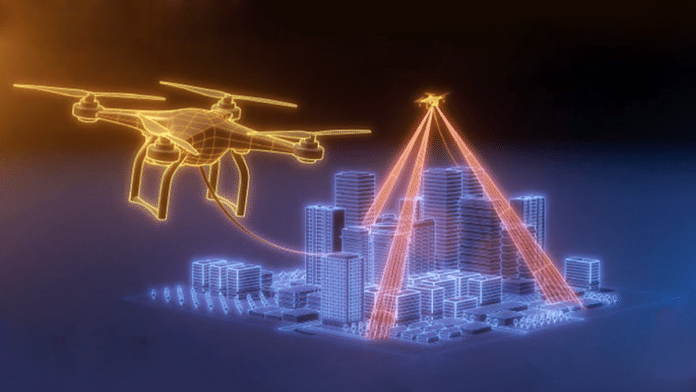Keeping up with wireless demand is a never-ending endeavor for data providers. They often contend with temporary high-usage hotspots that might be underserviced by the fixed-base station network.
A team of students at KAUST University in Saudi Arabia suggests that tethered drones could provide a solution for extending cellular network coverage by acting as flying base stations. These flying drones connected by a cable tethered to a ground station could be a flexible and low-cost solution for enhancing wireless connectivity in temporary hotspots, when and where it is needed.
“Transient hotspots of heavy data traffic can occur at events such as sporting matches, concerts, conferences, and exhibitions,” says Osama Bushnaq, a former Ph.D. student at KAUST. “However, the high cost of deploying fixed terrestrial base stations to serve such occasional or periodic events may not be warranted. In such circumstances, drones could hover over the hotspot to provide ground users with better connectivity. The question for us was whether tethered or untethered drones would be better.“
Drones or unmanned aerial vehicles (UAVs) have recently received a significant interest to assist terrestrial wireless networks thanks to their strong line-of-sight links and flexible/instant deployment. However, drone’s assistance is limited by their battery life and would rely on a good wireless link to a fixed ground station to provide the bandwidth needed to service the hotspot.
While a traditional drone is limited by its battery life, a tethered drone doesn’t need to recharge its batteries. It is wired to a ground station – and a fiber-optic backhaul connection can be carried alongside its power.
“To overcome these challenges, the drone can be connected to a cable or tether that provides an unlimited power supply and a high-capacity link to the core network,” says Bushnaq. “The tethered drone’s mobility is, however, restricted by the tether length and the ground station’s location. Given these advantages and shortcomings of tethered and untethered drones, we conducted a comparative analysis using a statistical coverage method and optimization of drone location.”
In their work, the KAUST team presents mathematic proof for the optimal drone location that provides maximum coverage for users within the hotspot and conducts extensive numerical simulations that showed the tethered drone system to outperform untethered drones in practical situations.
“In practice, the drone might fly to the nearest ground tether station to a hotspot, connect itself to the tether, and hover at the optimal position for as long as needed,” says Bushnaq. “The drone would then detach itself and fly to another ground tether station to serve another hotspot.“
Al-Naffouri’s group is also exploring other applications for tethered drones. “They could be used to accurately detect hostile drones, where pinpointing targets precisely is critical, especially around highly sensitive or secure locations,” Al-Naffouri says
